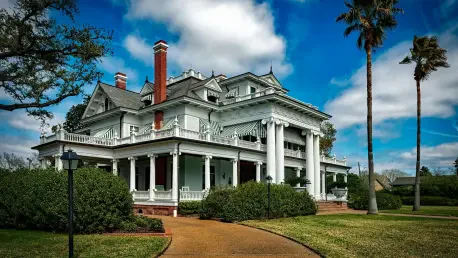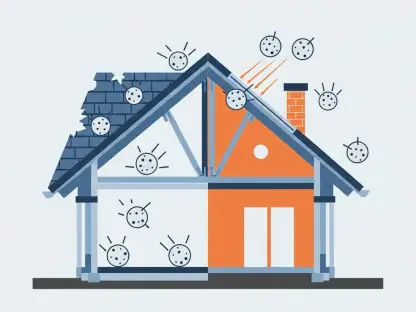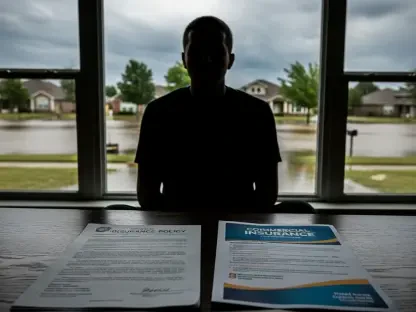As we dive into the world of non-standard and heritage property insurance, we’re thrilled to speak with Simon Glairy, a trailblazer in insurance and Insurtech. With his deep expertise in risk management and AI-driven risk assessment, Simon has carved out a niche in underwriting for properties that often fall through the cracks of traditional models. His journey—from agricultural surveying to founding a specialized MGA—offers a unique perspective on the challenges and opportunities in this complex field. In this conversation, we explore the intricacies of insuring heritage and renovation projects, the pitfalls of underinsurance, and the value of human expertise over automated systems.
Can you share the story of how you first entered the insurance industry?
Honestly, I didn’t plan on a career in insurance. I started as an agricultural surveyor and auctioneer, working closely with rural properties and estates. But I stumbled into insurance by chance, and something about the complexity of non-standard properties hooked me. I was drawn to the challenge of finding solutions for risks that others shied away from, especially in the heritage space. It felt like a puzzle worth solving, blending my background in property with a new way to protect unique assets.
What were some of the biggest hurdles you noticed in the farms and estates market when you began?
The farms and estates market was a tough nut to crack. It was almost always operating at a loss—rarely profitable due to the high risks and unpredictable nature of the properties. You’re dealing with vast, diverse assets, from old barns to sprawling land, often with outdated infrastructure. That exposure to heritage elements within those portfolios sparked my interest in older, listed properties. I saw a gap where mainstream insurers struggled to adapt, and I wanted to dig deeper into that niche.
What motivated you to launch your own venture after the 2010 management buyout?
After the buyout, I saw a real opportunity to address unmet needs in the market. There were so many renovation and heritage projects that traditional insurers overlooked or couldn’t handle well. Launching Renovation Insurance Brokers was about filling that void with specialized expertise. Over time, evolving into a full MGA allowed us to empower brokers directly, giving them better tools and support to navigate these tricky risks. It’s been rewarding to build something that makes a tangible difference for clients.
Why do heritage renovation projects often get sidelined by conventional insurance approaches?
Heritage projects are a different beast. They don’t fit neatly into standard underwriting boxes because of their unique materials, historical value, and the specialized work required to restore them. Traditional models often underestimate the costs and timelines, especially for listed buildings. Underinsurance is a massive issue—data shows 83% of properties are underinsured, sometimes covered for just half of what a rebuild would cost. It’s a silent crisis that can leave owners devastated if disaster strikes.
What’s behind the widespread underinsurance of listed properties, especially with rebuild costs?
A big driver is the failure to account for the true cost of restoration. Rebuild and contract works for listed buildings are often underestimated because they require niche skills and materials that aren’t readily available. Waiting for specialist trades can drag out timelines, which balloons costs further. Many clients and even some brokers don’t realize how much time and money it takes to get it right, so the insured sums fall short of reality. It’s a gap that can have serious consequences.
How does receiving detailed context in a submission impact your underwriting process?
Context is everything. A basic submission with just the bare bones is like seeing a blurry picture—you can’t make informed decisions. But when brokers provide detailed information about the property, the project, and the client’s needs, it’s like switching to high definition. You can tailor solutions that truly fit. For instance, knowing the history of a building or the specifics of a renovation plan has helped us craft policies that address hidden risks others might miss. It’s night and day.
Why do you prioritize human expertise over automated decision-making in underwriting?
Automated systems are useful for straightforward risks, but they fall short with non-standard properties. They rely on rigid data criteria and miss the nuances that come with unique buildings. That’s where human judgment shines—our team’s experience lets us look at a risk others might reject and find a way to make it insurable. We apply creativity and that last bit of insight to set terms and pricing that work. Relying solely on algorithms risks losing the art of underwriting.
Can you walk us through the creative solution for the remote thatched cottage requiring 10,000 liters of water on site?
That was a fascinating case. The cottage was in a remote area, and thatched roofs are a significant fire hazard. Most fire engines carry only about 600 gallons of water, which wouldn’t last long in a blaze. So, we worked out a plan to store 10,000 liters of water on site, ensuring the fire brigade had enough to respond effectively if needed. It’s not a common fix, but for non-standard properties, we often have to think outside the box. Tailored solutions like that are more frequent than you’d expect in our line of work.
What’s your forecast for the future of insuring heritage and non-standard properties?
I think we’re heading into a period of both challenge and opportunity. With growing interest in sustainability, modern construction methods, and green materials, we’ll see new risks emerge—some materials are highly combustible, which is a concern as net-zero goals push innovation. At the same time, conversions of older buildings into new uses will keep demand for specialized insurance high. I expect underwriters and brokers will need to collaborate even more closely, staying curious and proactive to manage these evolving risks effectively.









